How to Write a Motivation Letter: Guide & Examples for 2025
Write a motivational letter and strengthen your application. Express your enthusiasm and hope for the opportunity with a perfect motivation letter for a job.
Our customers were hired by:
There’s no doubt that the whole process of getting a training contract is in many cases yet another high-pressure, do-or-die step on the stress-paved road to becoming a solicitor or barrister. Clearly, an awful lot hangs in the balance according to how your cover (or covering) letter is received.
Writing a winning training contract cover letter needn’t be such a painful experience, though. The training contract cover letter example below is easily better than four out of five out there. This article will show you, step-by-step, how to write a cover letter for a training contract that’s at least as effective.
Read on to find plenty of tried and tested advice, UK-specific examples, and a data-driven approach to communicating your skills and suitability that takes the need for brilliant creative-writing skills off the table entirely.
Use the LiveCareer cover letter builder and your cover letter will write itself. Choose a professional template, answer a few easy questions and the creator will generate a professional cover letter for you with just one click.
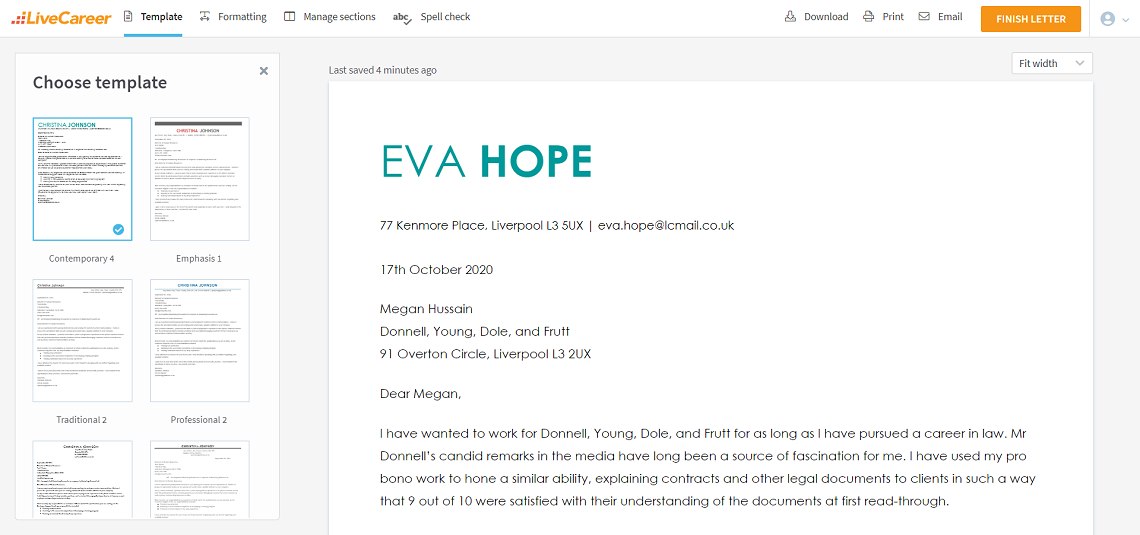
Looking for a different cover letter? See:
Your job is not on the list? See our full list of cover letter examples.
Eva Hope
77 Kenmore Place
Liverpool
L3 5UX
070 5555 5555
eva.hope@lcmail.co.uk
17th October 2021
Megan Hussain
Associate Partner
Donnell, Young, Dole, and Frutt
91 Overton Circle
Liverpool
L3 2UX
Dear Megan,
I have wanted to work for Donnell, Young, Dole, and Frutt for as long as I have pursued a career in law. Mr Donnell’s candid remarks in the media have long been a source of fascination for me. I have used my pro bono work to hone a similar ability, explaining contracts and other legal documents to clients in such a way that 9 out of 10 were satisfied with their understanding of the documents at first read-through.
During my recent vacation scheme with Trilly Risso I prepared various draft trademark opposition and cancellation forms, almost 97% of which were accepted by the solicitors without the need for revision. Working pro bono for Austin Solicitors I reviewed existing subcontractor relationships and identified changes required to ensure that they are fit for purpose going forward, with the projected end result being a subcontractor pool that is 100% fit for purpose and requiring 20% less resource input. I used the experience I gained with Trilly Risso to analyse the implications of relevant case law, legislation, and regulatory matters when working pro bono with four charities to help them adopt revised ways of working to ensure ongoing compliance, collectively avoiding over 15 potential infringements.
As you can see, I have been actively shaping my experience and commercial awareness in directions that I think are eminently compatible with the Donnel, Young, Dole, and Frutt way of doing things.
Thank you for your consideration. I very much look forward to stating my case in person during the course of an interview.
Yours Sincerely,
Eva Hope
Here’s what to include in a cover letter for a training contract:
Forget for the moment that the slightest error in your cover letter (or letter of application) could see your dream training contract go to someone else. Even at the best of times, sloppy writing speaks volumes about a legal practitioner’s work ethic. Write your header so that’s in line with the standard UK business letter format:
Eva Hope
77 Kenmore Place
Liverpool
L3 5UX
070 5555 5555
eva.hope@lcmail.co.uk
17th October 2021
Megan Hussain
Associate Partner
Donnell, Young, Dole, and Frutt
91 Overton Circle
Liverpool
L3 2UX
You can adjust every cover letter created in the builder to meet the job requirements. Choose the name of your profession and the company to which you’re applying, and the LiveCareer cover letter builder will automatically adapt the content for you. Create a cover letter faster than you ever thought possible and apply for the job in record time.
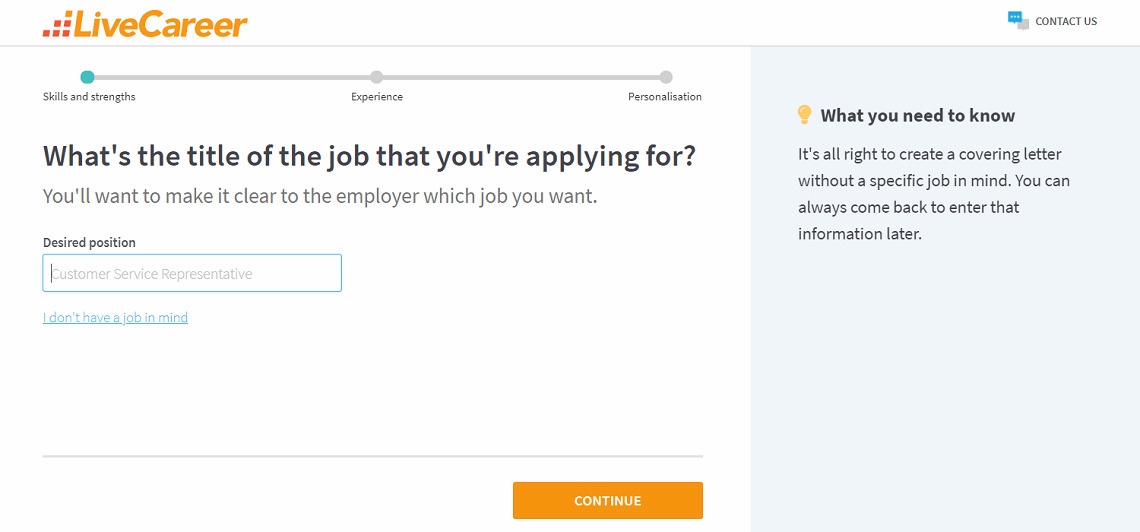
Start your cover letter for a training contract with the salutation ‘Dear’ + the first name of the person responsible for the recruitment process. Should you feel uncomfortable addressing someone significantly more senior than you in this way, use ‘Dear’ + their title and surname instead.
Use ‘Ms’ for women unless you know for a fact that they prefer ‘Miss’ or ‘Mrs’. If you don’t know or aren’t sure of somebody’s gender but don’t feel comfortable addressing them by their first name, then use ‘Dear’ + their full name, for example: ‘Dear Leigh White’. But you really ought to know their gender.
To leave something so basic unresearched when preparing your training contract cover letter would not reflect well on your legal skills, to say the least. If you’re in any doubt as to whom to address your cover letter, be sure to exhaust any and all online and offline avenues of discovery open to you to find out.
In the extremely unlikely event that you can’t put a name to the recruiter’s role, address your training contract cover letter to them according to their role. For example, if the firm or company has an HR department, then go with something like ‘Dear Hiring Manager’. Be more specific than that if you can.
Dear Megan,
The pressure is really on for you to make a good impression throughout your training contract candidature, and the opening paragraph of your training contract cover letter is where you’ll be making your first impression. Focusing on the importance of this one paragraph is a great way to get writer’s block, though.
Instead, break the task down into manageable pieces and the end result will take care of itself. Your opening paragraph has to make recruiters sit up and pay attention while also whetting their appetites for more. Forget gimmicky openings and surface-level novelty. Focus on hitting these three points:
If you already have some relevant legal or commercial experience, then start with an achievement. Frame it such that it clearly lines up with the firm’s or company’s stated goals and values. If the connection isn’t obvious, then explain how you can apply those skills to the firm’s / company’s situation.
If you don’t have any legal experience and can’t make any of your commercial experience relevant, then lead with your passion for the job. Include an achievement from your studies or elsewhere and include a belief statement, in which you show that you’re a match for the firm’s stated values and mission.
Being referred to the company can also be an advantage. Don’t shy away from mentioning that someone from within the organisation referred you to the position. This shows that you’ve had some contact with the firm’s culture and that at least one person within the organisation believes you’re a good fit.
Aim to write no more than 40–80 words in total for this part.
I have wanted to work for Donnell, Young, Dole, and Frutt for as long as I have pursued a career in law. Mr Donnell’s candid remarks in the media have long been a source of fascination for me. I have used my pro bono work to hone a similar ability, explaining contracts and other legal documents to clients in such a way that 9 out of 10 were satisfied with their understanding of the documents at first read-through.
You don’t have to create any content yourself. The LiveCareer cover letter generator will automatically suggest the best content for your cover letter with ready-made examples and expert tips.
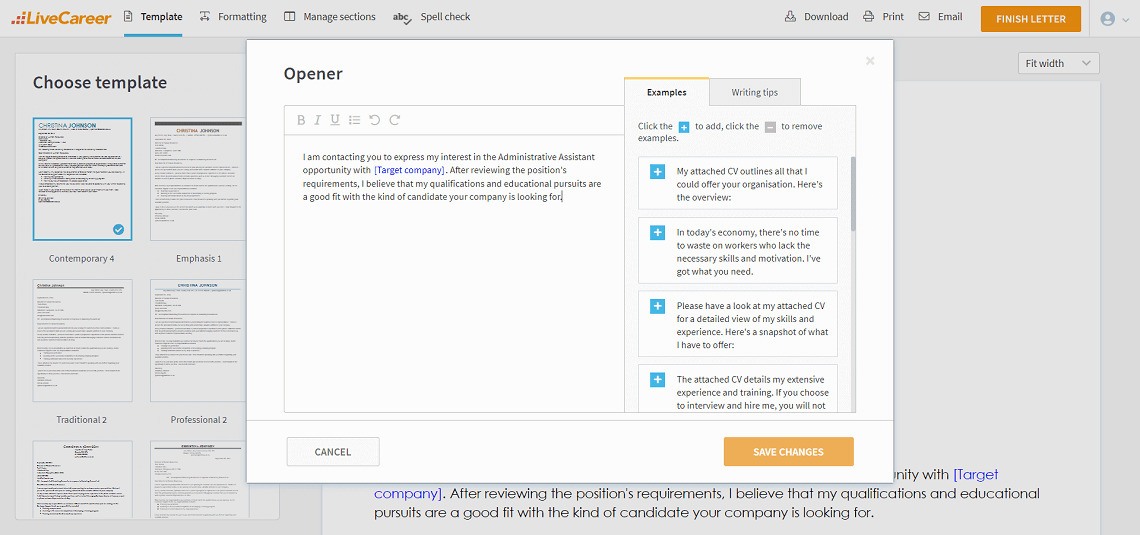
This part of your cover letter is where you’ll showcase your legal (and, potentially, commercial) achievements in rapid-fire succession, wowing your readers with a compelling list of measurable accomplishments. Quantifying each and every achievement is the key to making this happen. Nothing compels like strong evidence.
An achievement in this context is a description of actions you took (often in response to a problem, challenge or project) and the benefits that flowed from those actions to your employer. Use something like accomplishment statements to help structure your achievements. Quantify everything you can.
The main body paragraph of your training contract cover letter will be composed of two or three such achievements strung together to form a coherent narrative and make a strong case. Focus on quantifying the benefits you brought to your employer first and foremost, even if you have to estimate.
Limit yourself to 120–200 words. You can break this section down into two paragraphs to aid readability. Similarly, consider using bullet points to break otherwise monolithic blocks of text down into more manageable parts. The idea is to let the numbers speak for themselves as much as possible.
During my recent vacation scheme with Trilly Risso I prepared various draft trademark opposition and cancellation forms, almost 97% of which were accepted by the solicitors without the need for revision. Working pro bono for Austin Solicitors I reviewed existing subcontractor relationships and identified changes required to ensure they are fit for purpose going forward, with the projected end result being a subcontractor pool that is 100% fit for purpose and requiring 20% less resource input. I used the experience I gained with Trilly Risso to analyse the implications of relevant case law, legislation, and regulatory matters when working pro bono with four charities to help them adopt revised ways of working to ensure ongoing compliance, collectively avoiding over 15 potential infringements.
Summarising arguments and expertly tying up loose ends are qualities that both solicitors and barristers will need to demonstrate on a daily basis. Wrap up your training contract cover letter by doing just that. Tie everything back to the benefits that you’ll be able to bring to your new employer.
Take the few words it takes to thank the recruiter for the time they’ve already taken to weigh your application—this kind of acknowledgement can go a long way. Finally, end on a confident, proactive note and include a call to action (CTA) in the form of your expressed eagerness to participate in an interview.
This cover letter wrap-up, excluding the CTA, ought to run around 40–60 words. Keep it concise and don’t introduce any new facts at this stage.
As you can see, I have been actively shaping my experience and commercial awareness in directions that I think are eminently compatible with the Donnel, Young, Dole, and Frutt way of doing things.
Thank you for your consideration. I very much look forward to stating my case in person during the course of an interview.
This part is as easy to get right as it is glaringly obvious when you get wrong. There are only two options here:
Leave an additional line or two between this sign-off and your full name. Traditionally, when submitting a hard copy, this is where your signature would go. Do sign it by hand if you’re going to be printing it out. Otherwise, you can paste in a scan of your signature, but it’s certainly not necessary.
Yours Sincerely,
Eva Hope
Once you have all the content of your cover letter in place, it’s time to quickly run down a list of final considerations before taking a deep breath and clicking ‘send’. Given the fierce competition for many training contracts, getting any of the following things wrong could be ample grounds for rejection. Here are the best tips:
Many firms will set you a word limit for cover letters, in those cases you should of course stick to what they’ve set. In the absence of any such instructions, you should aim for a short cover letter that’s between half an A4 page and one A4 page long—about 300–500 words in total. Avoid making your cover letter two pages long, as it may overwhelm the reader. The body of your letter will be broken down like this:
Your training contract cover letter, CV and any other documents you submit constitute a single application—their appearance should signal this fact. Especially when it comes to the CV and cover letter, make sure your choice of font, colour (if any) and general layout is consistent.
Font is very important, but don’t overthink it. This is not where you’ll show your individuality or flare. Stay with a simple, professional and understated font like Noto, Garamond or even Arial. If in doubt, just leave the default Liberation or Calibri in place and set the size to 11 or 12 points.
Legal practitioners have a higher tolerance for huge, uninterrupted blocks of ‘fine print’, but that’s no excuse. Use plenty of white space, subheadings and bullet points (the latter two where appropriate) to break things down into sections and generally make your work easier to read.
It’s obvious to law firms when you’ve copied and pasted the same paragraph (let alone letter) and sent it out to multiple firms. There’s no way to do this and demonstrate an understanding of the nuances of a particular firm/company. So write a new cover letter from scratch for every training contract application.
Unless, that is, you’ve been explicitly asked for something else. File types like *.docx have ruined more than a few carefully formatted cover letters.
A cover letter alone simply won’t be enough—you need an impactful CV, too. Create your CV in minutes. Just follow our wizard and fill in every CV section with ready-made content. Get started by choosing a professional CV template.
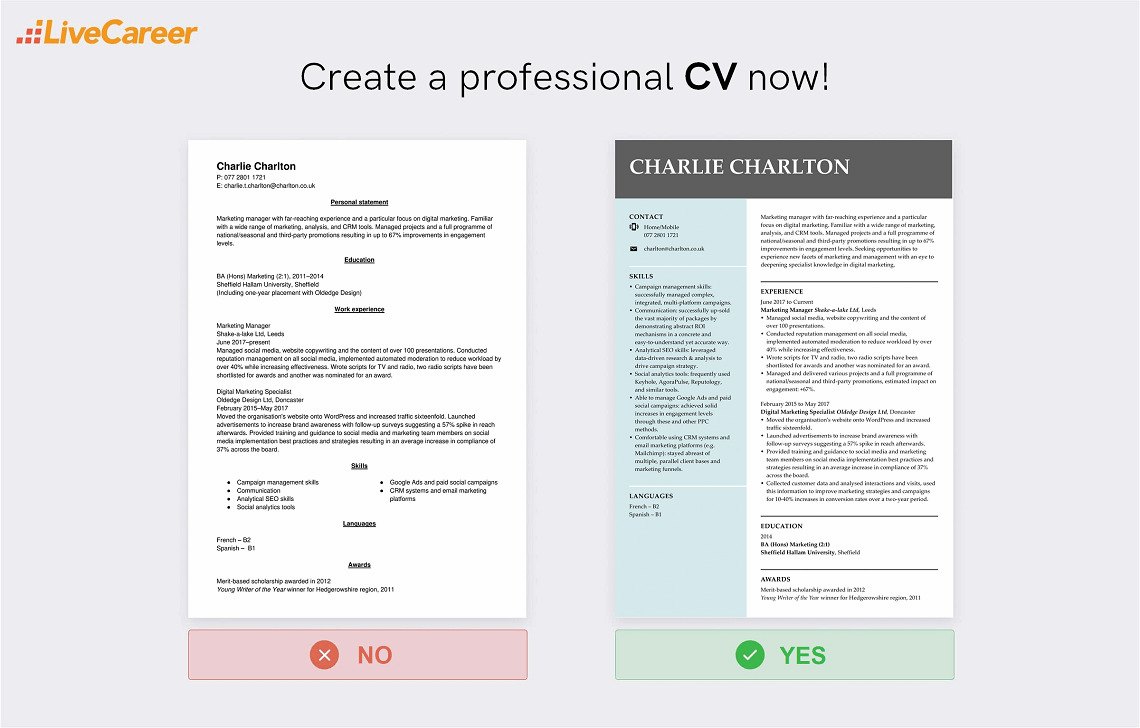
Getting a training contract is a big deal but it’s not the be-all and end-all of launching a career in law. I hope this article has helped you craft a training contract application cover letter sample of which you can be proud. Please leave any questions, comments, feedback or suggestions below.
Our editorial team has reviewed this article for compliance with Livecareer’s editorial guidelines. It’s to ensure that our expert advice and recommendations are consistent across all our career guides and align with current CV and cover letter writing standards and trends. We’re trusted by over 10 million job seekers, supporting them on their way to finding their dream job. Each article is preceded by research and scrutiny to ensure our content responds to current market trends and demand.
About the author
Since 2013, the LiveCareer UK team has shared the best advice to help you advance your career. Experts from our UK editorial team have written more than one hundred guides on how to write the perfect CV or cover letter.
Rate this article:
Training contract cover letter
Average:
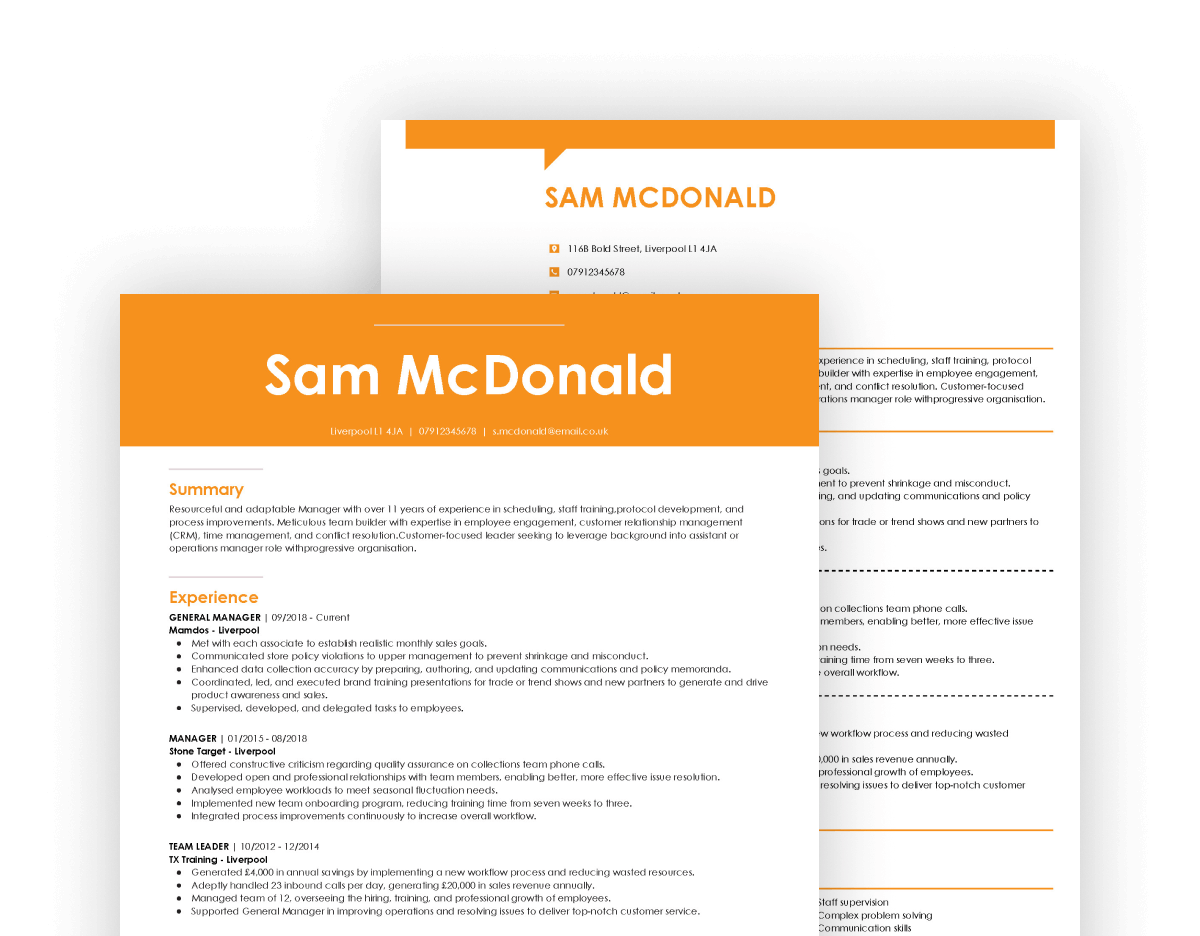
Write a motivational letter and strengthen your application. Express your enthusiasm and hope for the opportunity with a perfect motivation letter for a job.
How to write a letter of application that'll make recruiters take notice? See letter of application example to guide you through the whole process.
See a step-by-step guide on how to write a school-leaver CV for the UK. We’ve included numerous school-leaver CV examples to make writing even easier.
Our customers were hired by: